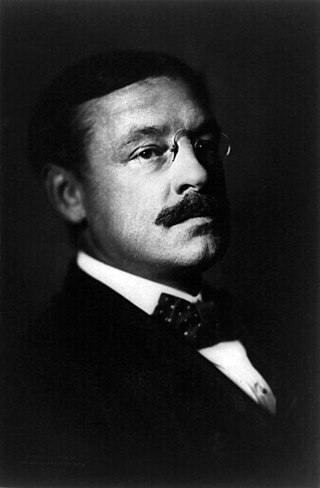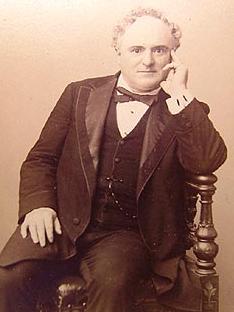Life
He attended Phillips Andover Academy and graduated from Harvard College in 1864, and from Harvard Law School in 1866. He was admitted to the bar and commenced practice in the firm of Evarts, Southmayd & Choate in New York City. In 1869, he formed a partnership with Ex-Secretary of State of New York Francis C. Barlow. In 1872, Barlow took office as State Attorney General and Olney helped with the prosecution of the members of the Tweed Ring.
He married Mary Sigourney Butler, and they had four sons: Peter B. Olney, Jr. (1881-1968), Richard Olney, Wilson Olney and Sigourney B. Olney.
In 1875, Olney ran on the Tammany ticket for New York County District Attorney but was defeated by the incumbent Republican Benjamin K. Phelps. Afterwards Olney left Tammany and joined the "County Democracy", the Anti-Tammany Democrats of New York City. After the death of D.A. John McKeon and the resignation of Wheeler H. Peckham after only a week in office, Governor Grover Cleveland appointed Olney in December 1883 as D.A. to fill the vacancy until the end of 1884.
In 1884, Olney decided to act against Marm Mandelbaum, [1] a criminal fence to many of the street gangs and criminals of New York's underworld. Instead of relying on the city’s police force, which Mandelbaum had reportedly been bribing for decades, Olney hired the Pinkerton Detective Agency, to conduct a sting operation that led to her arrest. [2] The use of Pinkerton detectives caused some friction between the district attorney’s office and the city’s police inspector. [2]
From 1897 until his death, he practiced law as senior partner of the firm of Olney & Comstock. From 1898 on he was also a U.S. Referee in Bankruptcy. In 1919, he was appointed by Surrogate Fowler as referee to investigate claims against the estate of the deceased actress Anna Held.
Olney died from pneumonia at his home at Cedarhurst, Long Island. He was a trustee of Teachers College. U.S. Attorney General and Secretary of State Richard Olney was his brother.

Wheeler Hazard Peckham was an American lawyer from New York and an unsuccessful nominee to the Supreme Court of the United States.

John William Goff Sr. was an American lawyer and judge from New York City.

Fredericka "Marm" Mandelbaum operated as a criminal fence to many of the street gangs and criminals of New York's underworld, handling between $1–5 million in stolen goods between 1862 and 1884. Like her principal rival John D. Grady and the Grady Gang, she also became a matriarch to the criminal elements of the city and was involved in financing and organizing numerous burglaries and other criminal operations throughout the post-American Civil War era. With George Leonidas Leslie, she was involved in the 1869 Ocean National Bank robbery and the 1878 Manhattan Savings Institution robbery.

William Travers Jerome was an American lawyer and politician from New York.

Edward Swann was an American lawyer, jurist, and politician from New York. From November 4, 1902, to March 3, 1903, he served part of one term in the U.S. House of Representatives.

John R. Fellows was an American lawyer and politician from Arkansas and New York. He served as New York County District Attorney, and a member of Congress from New York (1891–1893).

The 1882 New York state election was held on November 7, 1882, to elect the governor, the lieutenant governor, the chief judge and a U.S. Representative-at-large, as well as all members of the New York State Assembly. Besides, two constitutional amendments were proposed - the abolition of tolls on the State canals, and to increase the number of justices on the New York Supreme Court - and were accepted by the electorate.

Frank Rice was an American lawyer and politician.

The New York County District Attorney, also known as the Manhattan District Attorney, is the elected district attorney for New York County (Manhattan), New York. The office is responsible for the prosecution of violations of New York state laws. The current district attorney is Alvin Bragg. He was elected in 2021 to succeed Cyrus Vance Jr.

A special judicial election was held on May 17, 1870, to fill the seats on the re-organized New York Court of Appeals.

The 1873 New York state election was held on November 4, 1873, to elect the Secretary of State, the State Comptroller, the Attorney General, the State Treasurer, the State Engineer, a Canal Commissioner and an Inspector of State Prisons, as well as all members of the New York State Assembly and the New York State Senate. Besides, the voters were asked if the judges of the New York Court of Appeals, the New York Supreme Court, and the county and city courts, shall be elected or appointed; the electorate decided to maintain the elective system.

The 1879 New York state election was held on November 4, 1879, to elect the governor, the lieutenant governor, the secretary state, the state comptroller, the attorney general, the state treasurer and the state engineer, as well as all members of the New York State Assembly and the New York State Senate.

The 1883 New York state election was held on November 6, 1883, to elect the Secretary of State, the State Comptroller, the Attorney General, the State Treasurer and the State Engineer, as well as all members of the New York State Assembly and the New York State Senate. Besides, a constitutional amendment to abolish contract labor from the state prisons was proposed and accepted with 498,402 votes for and 269,377 against.

The 1884 New York state election was held on November 4, 1884, to elect two judges of the New York Court of Appeals, as well as all members of the New York State Assembly.

Nelson Jarvis Waterbury was an American lawyer and politician from New York.
John Vincent was an American lawyer and politician from New York.

Thomas Crowell Taylor Crain was an American lawyer and politician from New York. He was New York County District Attorney from 1930 to 1933.
Frederick Smyth was an American lawyer and politician from New York.

The 105th New York State Legislature, consisting of the New York State Senate and the New York State Assembly, met from January 3 to June 2, 1882, during the third year of Alonzo B. Cornell's governorship, in Albany.

The 106th New York State Legislature, consisting of the New York State Senate and the New York State Assembly, met in Albany from January 2 to May 4, 1883, during the first year of administration of Grover Cleveland













